Inside the Studio with Laurence Elle Groux
Inside the Studio offers a behind-the-scenes peek into the work environments of WTP artists, as well as insight into their creative process within these resonate spaces. See Laurence Elle Groux’s work in WTP Vol. X #3.
By Jennifer Nelson, WTP Feature Writer
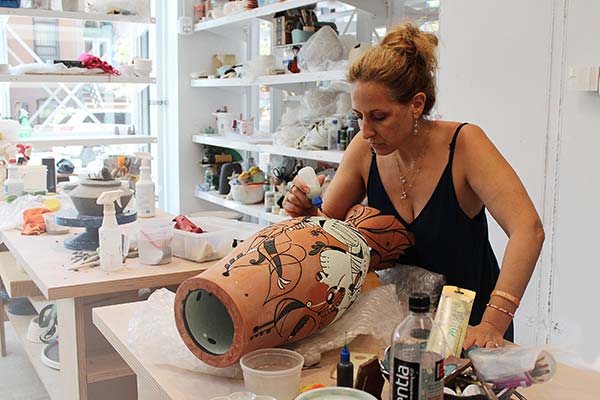
Laurence Elle Groux feels fortunate to have two studios to create her sculptures. One is in a room in her apartment in New York City, surrounded by her books and sentimental and spiritual objects, she works on small ceramics and functional pieces like jars and vases. “This place has great energy, the window gives straight into a tree,” says Groux. “It feels like being in a treehouse once the leaves spread after winter. Peace and serenity help my creative process.”
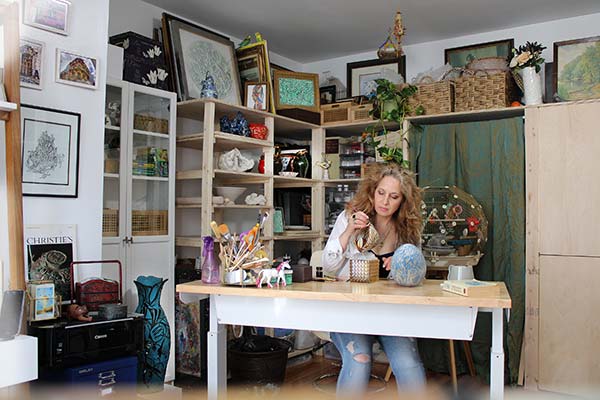
Last December, when her stepson moved to college, she could use a bigger room—250 square feet versus 100 square feet—as a studio in her Washington Heights apartment. Her partner built shelves to store supplies, tools, and works in progress. She finally had space for her vintage frames and bubble wrap. This intimate space also serves as an office where she works on the administrative part of being an artist including submissions to shows, grants and residencies, and editing photos of her finished pieces. She works at a Husky rolling worktable. “It has a crank, making life easier for my neck,” says Groux, who had an accident several years ago. “This is where my physical disability resides.”
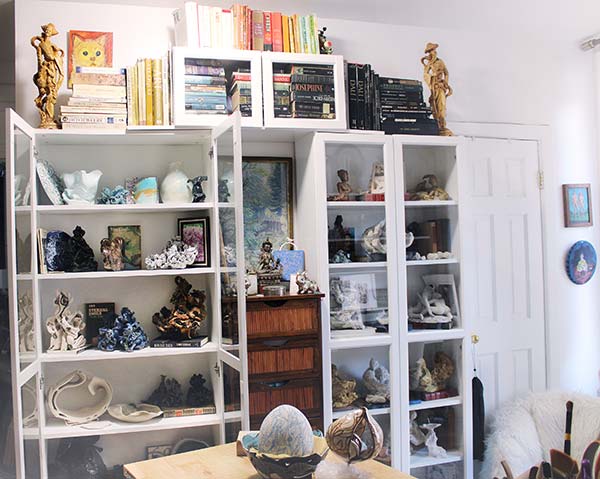
At her home studio, Groux begins the day with drinking coffee, feeding her cats and birds, and straightening up the house. Then she creates functional ceramics like vases and jars, a warm-up to her artistic endeavors, which she uses to test and discover variations of glazes she might later use in her sculptures. For a week or two, she works from home—her birds fly around her, music plays or a silly series is on TV. “I just get in the zone,” says Groux. “Touching clay makes me so happy.”
She works ten to twelve hours a day, six and a half days a week.
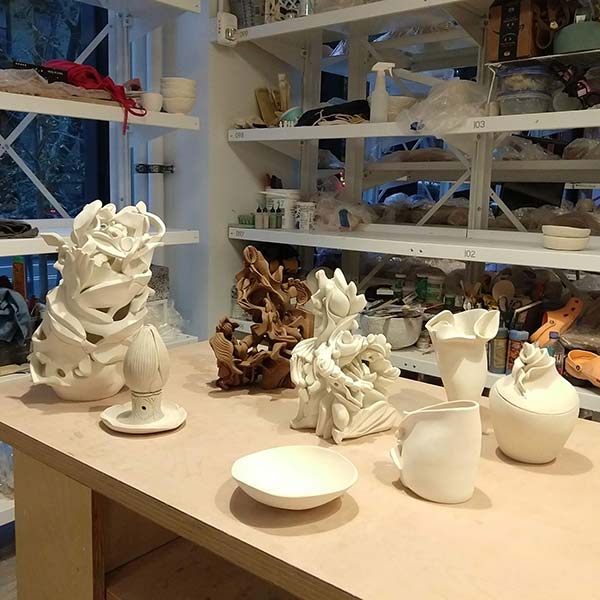
Each piece is sculpted differently, starting from a block of clay or with coils or slabs, with many tools used to create it. “My pieces get so intricate at some junctures, and some spots are hard to reach,” says Groux. “Specific tools will come to the rescue.”
When she sculpts, she doesn’t like to be boxed into a specific idea. Instead, she prefers to explore with the materials being in charge, her ego dormant. She works intuitively, trusting the process of creation. “I orchestrate the movement like a conductor, conjuring feelings ranging from joy and love to despair and loss,” says Groux. “Though this work, I aim to capture the energy of wonder and magic.”
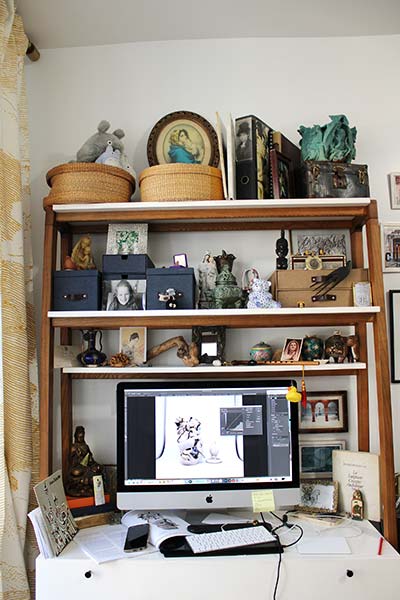
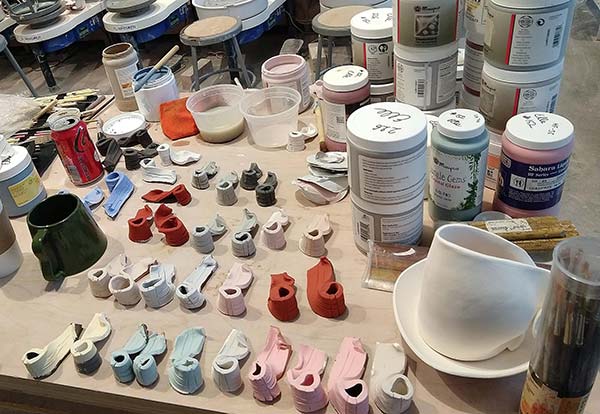
Her second workplace is at BKLYN CLAY, a ceramics studio in Brooklyn where she glazes, fires and works on larger pieces. Once she finishes a series of small clay objects and they are bone dry, she packs them up in bubble wrap, putting each in a cardboard box and placing them in an Ikea bag. She doesn’t have a kiln at home, so heads to BKLYN CLAY, where she’s been a member for the past one and a half years. To get there, she takes the subway, changing trains and carrying her artwork. The journey, which begins between 8 and 8:30 a.m., takes a least an hour. “I may have a rolling cart, a giant Ikea bag on the shoulder, and my regular everyday bag,” says Groux. “Sometimes, I must admit, it is insane how heavy and bulky it is, but there is no other way for now.”
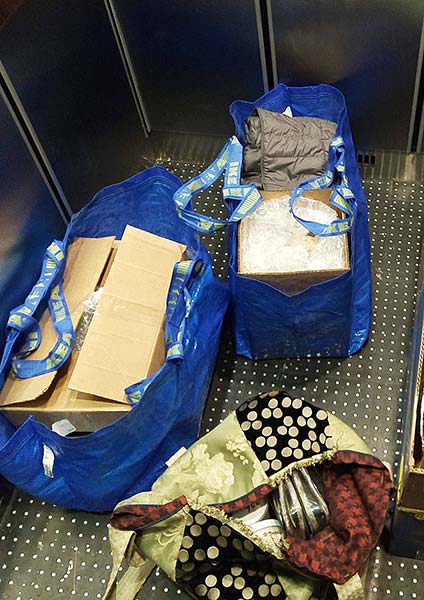
Once there, she grabs a coffee at a nearby deli—and arrives happy to see other artists busy at work. She’s made many wonderful friends at BKLYN CLAY, which she calls a home away from home. “It is a beautiful community, and we help each other by sharing tips and welcoming critics,” says Groux.
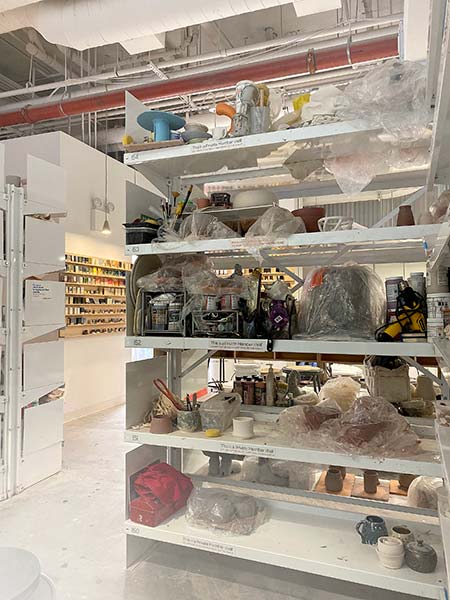
At BKLYN CLAY, she brushes on glaze. She gave up dipping since her work’s intricacies were getting lost under too much glaze. While her artwork is in the kiln, she starts work on new sculptures. She excitedly waits for the kiln to do its job. “The kiln and the fire are the masters,” says Groux. “Sometimes magic happens, and sometimes disaster comes of the kiln! I personally reglaze and refire until I am satisfied with the result.”
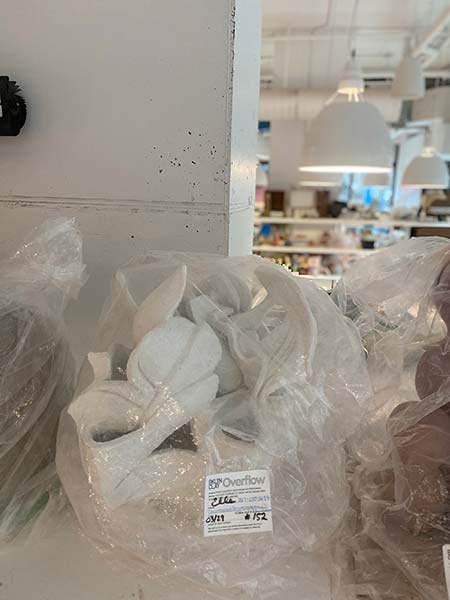
Groux is now working on a project for a future show based on the concept of “abstract nouns.” These nouns cannot be seen or touched, though they can be experienced emotionally. Some examples include hope and fear; innocence; nostalgia and solace; wisdom and sorrow; and chance and becoming. This work will be shown under “The Dichotomy of the Human Spirit.”
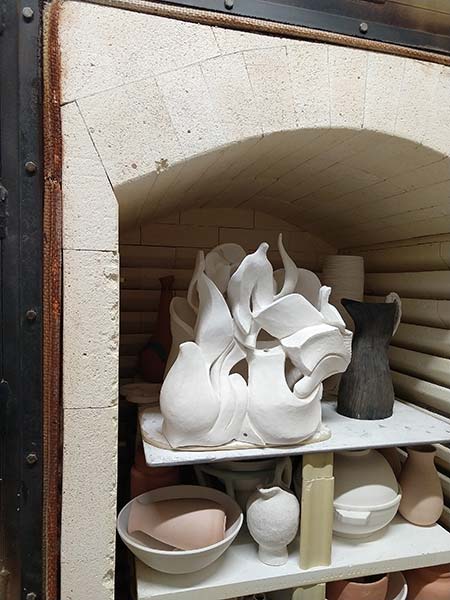
To create these sculptures, she pairs one abstract noun with another to create stories. These abstract nouns come to her as life unfolds around her. She has almost finished “Peace and Victory,” a sculpture that started at the beginning of the Ukrainian War. She has also begun work on “Confidence.” “It will be built as a tall Totem in six different pieces that will be stacked on top of one another as ‘we build confidence,’” says Groux. “This is a work that has to be created at BKLYN CLAY. It would be downright insane to carry it piece by piece on the subway.”
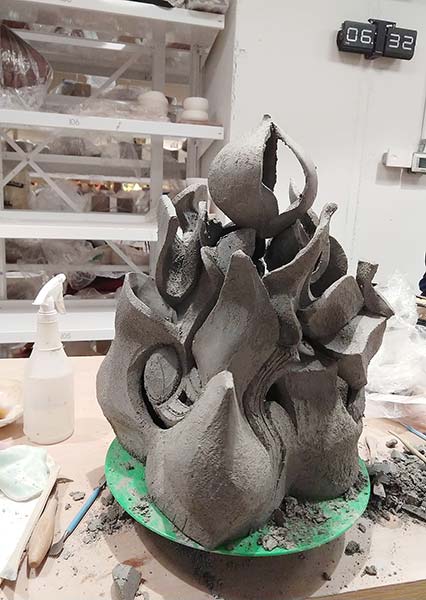
Groux likes to believe that she is forging a new aesthetic of abstract sculpture. She is fascinated by nature’s effervescence—and in her artwork, she tries to recreate the softness and fluidity of shapes in nature. She balances the play of contrast with the piece’s fluidity, so each piece has no front or back. “The sculpture can become new again by changing the angle of the viewer’s perspective,” she says. “It inspires visual curiosity.”
Click here to read more Inside the Studio features.
Copyright 2022 Woven Tale Press LLC. All Rights Reserved
